New York’s famous skyline is changing as a new breed of skyscrapers springs up across Manhattan.
I discovered towering luxury apartments designed for the super-rich are booming when I visited the city last month. ‘Super high rise’ properties selling for more than £64 million are common. This is New York for the elite.
A property called simply One 57 is one of the most expensive developments. The penthouse suite overlooks Central Park and boasts a so-called “$100 million view”. With an Italian marble bathroom and glamorous ‘millionaire’ interior, this is how the other half lives in the Big Apple.
Watch a video about New York’s changing skyline and go inside a million dollar apartment
Critics say these properties are glorified ‘safe deposit boxes with a view’, designed to make property speculators rich. Some of these mansions in the sky may never be lived in. It’s a waste of a dream home, if you ask me.
Rooms with a view
This remarkable image from Visualhouse gives an idea of how dramatically the New York City skyline will change in 15 years time.
And it’s not just housing that is leading the drive to build higher – many developments in Lower Manhattan are designed for high-end offices and commercial use.
King of the commercial ‘super skyscrapers’ is the World Trade Center complex with its record-breaking 1,776-foot height tower at Number One which dominates the skyline.
This bold yet controversial addition to the New York skyline is 104 stories high, making it the tallest building in the Western Hemisphere. Dubbed “the best office address in the world”, there’s no arguing that the views from the top are spectacular.
Critics say greed had triumphed in the redevelopment, initially intended as a replacement for the Twin Towers, destroyed in the 9/11 terrorist attack.
Once known evocatively as the ‘Freedom Tower’, it has been mired in controversy and compromise. Even the name has been changed.
Daniel Liebskind, the original architect, declared himself not longer part of the project after ongoing battles and changes to his designs. I can’t help thinking that rampant capitalism has once again stamped its mark on the bigger vision.
My fellow traveller Davey H recently made the journey to the top of the One World Observatory, enthusing about its stunning views across New York. For him, it’s a winner, as anyone can take the lift to the top, not just the super rich.
For foodies, there’s no better place than the One restaurant on the 101st floor mezzanine, overlooking the main observation deck. Not recommended if you suffer from vertigo!
Sky high visions
Sky high developments are everywhere you look at the tail end of Manhattan. Second tallest of the World Trade Center Towers is 2 WTC which is the main cornerstone of the Lower Manhattan revitalisation project.
Teetering at a dizzying 80 plus stories high, it will be the new headquarters for 21st Century Fox and News Corp with 5,000 people working under one roof.
Number 2 lies at the crossroads between two very different neighborhoods – the Financial District with its modernist skyscrapers and TriBeCa with its lofts and roof gardens.
The designers say they’ve combined the qualities of each district, melding high-rise modern with low-rise historical. As far as I can see, the giant skyscrapers seem to be winning this battle.
The building is a tall and slender tower but look around the back and you’ll spot cascading, stepped green terraces. The building’s design is aligned along the axis of Daniel Libeskind’s Wedge of Light plaza to preserve the views to St. Paul’s Chapel from the Memorial Park.
The outdoor terraces boast lush greenery and views of the surrounding cityscape with the aim of extending social interaction with the great outdoors. I like the idea but I’m not sure whether it works in practice.
With a public plaza at the foot of the building, there are plans for shopping and restaurants in the adjacent transportation hub and concourses, set to open soon.
I like the curvy design of the subway station very much but I’m not sure about the surrounding buildings which could be in any major world city.
Next to the plaza is the 9/11 Memorial Plaza designed as a commemoration to those who lost their lives in the terrorist attacks. It’s designed as a place of hope for the future — evoking the twin spirits of remembrance and renewal.
Set within the footprints of the original Twin Towers, each pool is about an acre in size. The names of every person who died in the terror attacks of February 26, 1993 & September 11, 2001 are honoured in bronze around the twin pools.
The park is designed as a contemplative sanctuary, composed of a grove of nearly 400 white oak trees, and the largest man-made waterfalls in the United States.
Standing at its edge is an emotional and sobering experience. I love that this hasn’t been walked over by developers with cash tills in their eyes.
Within the bigger plaza is the new 9/11 Memorial Museum which tells the story of the terrorist attack through multimedia displays. With its low slung, wedge-shaped design, it is very different in style from its super-tall neighbours.
It’s an unusual building because the exhibitions are housed in subterranean galleries below ground level, making this an intimate space. I’d recommend booking in advance, if you’re planning a trip.
‘Star architects’
Super skyscrapers still rule the roost in Manhattan. The people behind many of the new breed of super skyscrapers are the so-called “starchitects”, famous architects with futuristic visions.
Frank Gehry, Richard Meier, Zaha Hadid, Robert Stern and Renzo Piano are some of architecture’s biggest stars. When they design a building, they pull out all the stops to make a big impact.
Chelsea is becoming a mecca for big-deal architects. Japanese star-architect’s Shigeru Ban’s creation’s at 524 West 19th Street is an 11-story stack of “boxes” with open-and-shut metal shutters which provide futuristic privacy screens for each apartment.
The daddy of them all is Frank Gehry’s 8 Spruce Street (‘New York’ as he calls it), one of the most striking of the new breed of modern skyscrapers in New York City. Its spiral stainless steel and glass tower look like an undulating rib cage with 10,500 metallic panels of different shapes, designed to create the feeling of gentle movement.
This is theatrical, high impact architecture with its curvy, shimmering frame that looks like something from a movie set – Alien meets Terminator by way of The Matrix .
Each apartment boasts asymmetrical bay windows that reflect the curve of the building. The penthouse suite, which is the tallest apartment in NYC, offers stunning views over Manhattan. At a cool $39,500 a month, this is high living at a sky-high price.
With floor to ceiling windows, luminous white oak floors and interior design by the great man himself, I’d be worried about living in this space without ruining its perfect design. I mean, where do you put your television, mountain bikes, messy magazines and everyday stuff? This minimalism wouldn’t work for my ‘clutterbug’ family.
If you’ve cash to splash, another alternative is architect Jean Nouvel’s 23-story residential tower at 100 11th Avenue with its curving facade of geometric, glass rectangles. These super-modern apartments can fetch as much as $12.5 million although a cheaper studio flat can be snapped up for just $995,000. A snip at the price!
Living the high life
In the 1930s the High Line carried goods to and from Manhattan’s largest industrial district by rail. The last train ran along the track in 1980, pulling three carriages of frozen turkeys.
After its closure, a group of property owners lobbied for its demolition but visionary Chelsea resident, Peter Obletz, challenged the plans in court.
The Friends of the High Line eventually won a famous victory for the conservationists and work started to create a high level public walkway with art works along its route.
Today the high-level railway has been transformed into a linear urban park which has become a hugely popular walkway for New Yorkers and visitors with unique views over the neighbourhood.
The High Line’s landscape design is inspired by the self-seeded landscape that grew on the disused rail tracks over the 25 years after the trains stopped running.
The High Line is one area of New York where the skyline is also changing but here it isn’t all about new skyscrapers. There’s plenty of mid-scale towers and apartments growing up in keeping with the area’s less dense character.
Architect Zaha Hadid’s visionary 520 West 28th Street in Chelsea will be her first building in New York City, right next to the High Line.
This 11-story residential building in eye-catching glass and steel will create “a powerful urban dynamic” with “multiple perspectives on the neighbourhood” according to the designers.
It’s certainly original and bold. I also imagine myself sun bathing on the top floor sipping on a Manhattan cocktail after a hard day’s work at the office – when I win the National Lottery!
One of its apartments has been dubbed the ‘Don Draper apartment’ due to its similarity to the successful Mad Men character’s stylish pad in the TV series.
It has a retro chic feel with its outdoor patios and curvy design which recall the spirit of a 1960s Pop Art party for New York’s glitterati.
Elsewhere, a growing army of new mid-scale developments are strung out along the High Line, rising ever skywards.
The Meatpacking District’s rise
The High Rise’s elevated structure runs right through the Meatpacking District, boosting the area’s fortunes as hordes of visitors trek along the parkway.
Architectural projects are booming. Thankfully, not all the big name architects are designing buildings purely for the super rich or corporate businesses.
Renzo Piano’s latest grand design is a gallery, the new Whitney Museum of Modern Art, bang in the heart of the Meatpacking District.
This stunning building clad in white and metallic grey makes a dramatic statement in an area of the city where regeneration is taking place as a rapid pace.
Up on the gallery roof there’s a great view of the Meatpacking District’s changing skyline. It’s easy to be distracted from the fantastic modern art collection inside when there are stunning views to admire outside.
The atmospheric old sheds and market buildings have been transformed into speciality shopping, eateries and swanky roof top bars, a far cry from the area’s blue-collar past.
On the Whitney roof garden there are coloured chairs and viewing platforms where you can chill out and look across the city.
Back inside, the architect has provided visitors with a waterfront view and comfy seats where you can ponder the fortunes of New Jersey’s skyline over the water.
It’s interesting to wonder how this window on New York’s world might change over the next 20 years.
The Upper West Side
The Upper West City was renowned for its rapidly changing skyline in the 1960s and 1970s when many old streets were swept away and replaced by new tower blocks and developments.
A whole neighbourhood was demolished to make way for modern developments between 65th and 59th streets, around Amsterdam Avenue.
Dubbed the “worst slum in New York” in the 1940s, it was earmarked for demolition in the late 1950s. More than 5,000 working class people once crammed into its tight-knit streets of low-rise tenements.
Its tenements were ripped down to make way for the Lincoln Center and the Julliard School, shining monuments to the performing arts, which now attract thousands of visitors and students every year.
Today, the area continues to evolve and change with towering developments marching southwards towards Columbus Circus. It’s here that Trump Towers has stamped its large feet – all 58 floors of them – over the streets below.
Trump Tower was built on the former site of the Bonwit Teller store, an architecturally important building, which was demolished by Trump in 1980.
Trump had promised to preserve some of its historic Art Deco features including its sculptures of goddesses as well as the ornate entrance. But he went back on his promise to donate these to the Met Museum and demolished the whole lot. Apparently it was too expensive and difficult to worry about its historic value.
I think this is a really gross, tasteless development of shops, flats and offices. A concrete monstrosity but you may beg to differ?
Nearby, the whole Central Park area has been ripe for some of the biggest towering developments in NYC. A room with a $1 million view of the park is on most millionaire’s wish lists.
Disfiguring the skyline?
There’s no doubt that the battle to build higher and higher is hotting up in New York. A room with a view is a must-have for anyone who’s anybody.
Recently, Nordstrom Tower, was rumoured to be increasing the height of its spire by 20 feet, which would make it 1,795 feet tall. That’s 19 feet taller than One World Trade Center, the current tallest building in the Western Hemisphere.
But the development company rejected this report, telling the New York Post that the building will stay at 1,775 feet (one foot shorter than One World Trade center) “out of respect”.
Elsewhere, the 1,396-feet tall 432 Park Ave, a 104-story tower under construction, is already being touted as the new, tallest residential building in the western world. Another mega-building at 217 West 57th Street is expected to be completed in 2018.
The big question is are these super skyscrapers for the super-rich disfiguring the skyline? Some critics also believe they’re undermining New York’s housing market by flooding it with highly priced apartments.
It’s shocking to think that 40% of New Yorkers living in the city live at or near the poverty line. Who is building high-rise homes for them?
As tourists, we look up and wonder about these super-high communities which are out of reach for anybody but the super wealthy. It’s great for lovers of panoramic city views but perhaps these developments have just gone a little too far?
Tammy’s Guide – New York’s Tallest
New York has been famous for its skyscrapers for decades. The Empire State and Chrysler Buildings are still in its top five tallest list, even though these Art Deco masterpieces were built back in the 1930s.
But there a growing number of new kids on the block and yet more blockbusting – or should I say cloudbusting – buildings are on their way.
The “world’s skinniest skyscraper” at 111 West 57th Street will pierce the skies at 1,428 feet. Bizarrely, it will only be 60 feet wide. It will be home to 60 exclusive apartments starting at $14 million and hitting $100 million.
New York has always had a reputation for being a high flyer and nothing much has changed. The fight for extreme height goes on.
But which are my favourite high-rise views of the city?
Well, the Rainbow Rooms at the top of the Rockefeller Building is my top high spot with sensational views over Manhattan. Sipping a cocktail in its sky-high bar with wonderful views down Manhattan is hard to resist.
The Empire State is still many people’s iconic viewpoint in the Big Apple… and it’s hard to disagree.
Whatever your favourite skyscraper, for developers and architects, building higher and higher has become an obsession. For them, the sky is truly the limit.
Categories: Architecture, Design, Travel, Travel, USA



























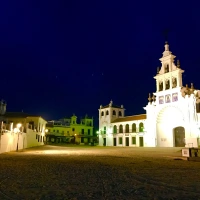



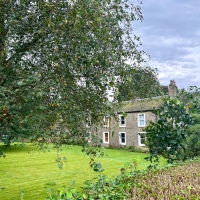
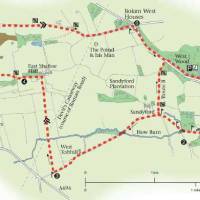

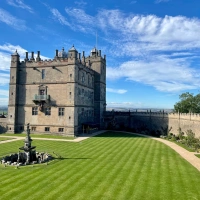
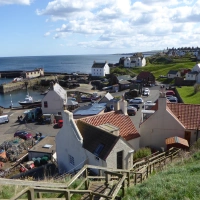

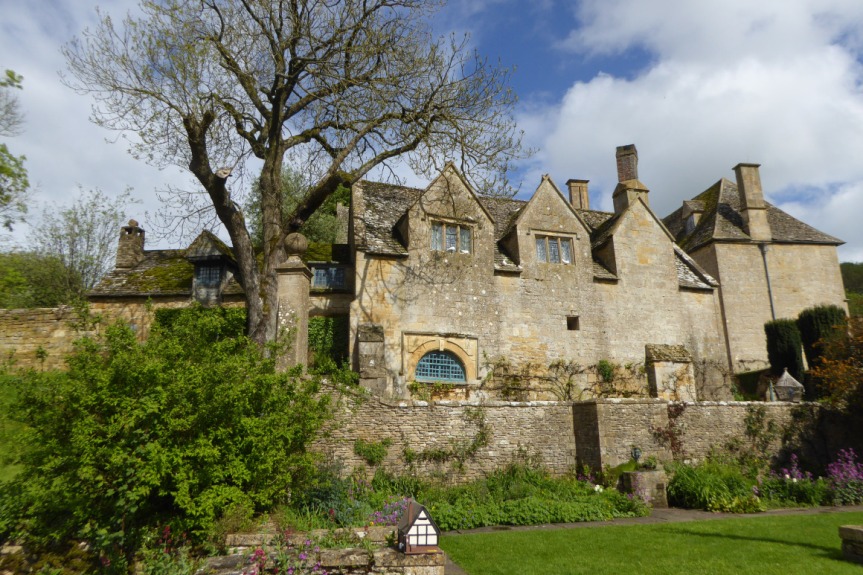



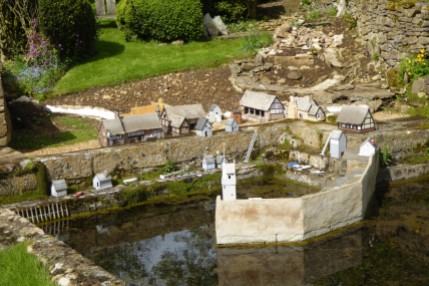



Reblogged this on nikkijefferson|design. and commented:
Simply Beautiful
Thanks, Nikki. I’ll be interesting to go back in a year’s time and see how the skyline has changed again. I fancy one of those Don Draper apartments myself!
Doing some photo research. Can you provide the provenance of the locomotive #8350 on the High Line?
Thanks!
Kent
Let me check for you… more soon. Thanks for getting in touch.